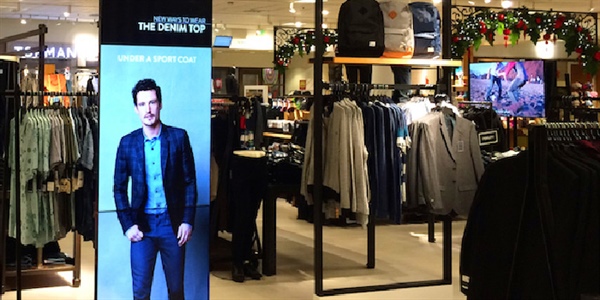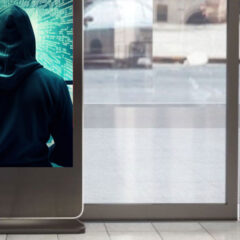Enhance the Customer Experience with Digital Experiences

Harry Selfridge would have loved digital signage.
Selfridge’s use of visual marketing concepts revolutionized retail in 1908, changing shopping from an unpleasant but necessary chore to a form of entertainment. Before he opened his London department store, shopping was mostly a tedious experience. Merchandise was locked away behind counters, assistants stood guard against shoplifters, and you had to ask a clerk to fetch any items you wanted to buy.
Selfridge created a more welcoming and adventuresome environment with visual cues that encouraged browsing and impulse buying. Merchandise was placed out in the open in eye-catching displays so customers could examine goods before buying them. Prominent in-store advertisements directed shoppers to popular and profitable items. In-store restaurants, reading rooms, reception areas and public restrooms were other Selfridge innovations — all designed to enhance the customer experience and encourage people to stay in the store longer.
Selfridge’s focus on customer experience remains relevant 110 years later. Despite the increasing popularity of online shopping, most consumers report they still prefer the experience of shopping in a physical store. In fact, U.S. Census data reveals that 90 percent of retail purchases are made in brick-and-mortar stores.
Today’s retailers are increasingly using innovative digital experience solutions to enhance the in-store experience with dynamic visual aids. With the ability to quickly and efficiently update, modify and rotate messaging, digital engagement can make shopping an immersive, interactive experience for today’s digitally savvy consumers.
A wealth of research illustrates why a well-designed digital signage strategy can make a lasting impression on customers. Consider the following statistics compiled from studies by the Social Science Research Network, the Visual Teaching Alliance, Stanford University, Arbitron and others:
- Ninety percent of information transmitted to the brain is visual.
- The brain processes visuals 60,000 times faster than text.
- People retain 80 percent of what they see, 20 percent of what they read and 10 percent of what they hear.
- Visual stimuli trigger emotional, cognitive and imaginative responses.
- Digital signage reaches more people than social media videos.
- By serving as an entertaining distraction, digital signage reduces customers’ perceived waiting time by 35 percent.
That doesn’t mean you can just throw up any old image or video and expect positive results. Poorly conceived digital interactions can actually contribute to a negative customer experience. Here are some common mistakes that can reduce the impact of your digital signage:
- Poor contrast reduces readability and won’t hold customers’ attention.
- Obvious stock photographs display a lack of effort and imagination.
- Pixelated, low-resolution and otherwise poor-quality images can cause customers to question the quality of your business and products.
- Cluttered screens with too many images and too much text can overwhelm viewers and reduce comprehension.
Done right, however, digital interactions can be a powerful tool for engaging customers and enhancing their overall visit. That, in turn, can create customer loyalty and increased sales. According to a Nielsen Consumer Survey, stores using digital signage experienced up to 33 percent in additional sales. As Selfridge once said of his visual marketing efforts: “Excite the mind and the hand will reach for the pocket.”
In our next post, we’ll explore five ways you can use digital signage to enhance the customer experience.
More Insights
-
Digital Experiences, SageVIEW Approach
How Digital Signage Boosts Workforce Productivity
-
Digital Experiences
How Digital Signage Can Play a Role in Reducing Workplace Stress
-
Digital Experiences
7 Steps for Upgrading and Enhancing a Digital Signage Network
-
Digital Experiences
Why You Should Make Digital Signage Security a High Priority




